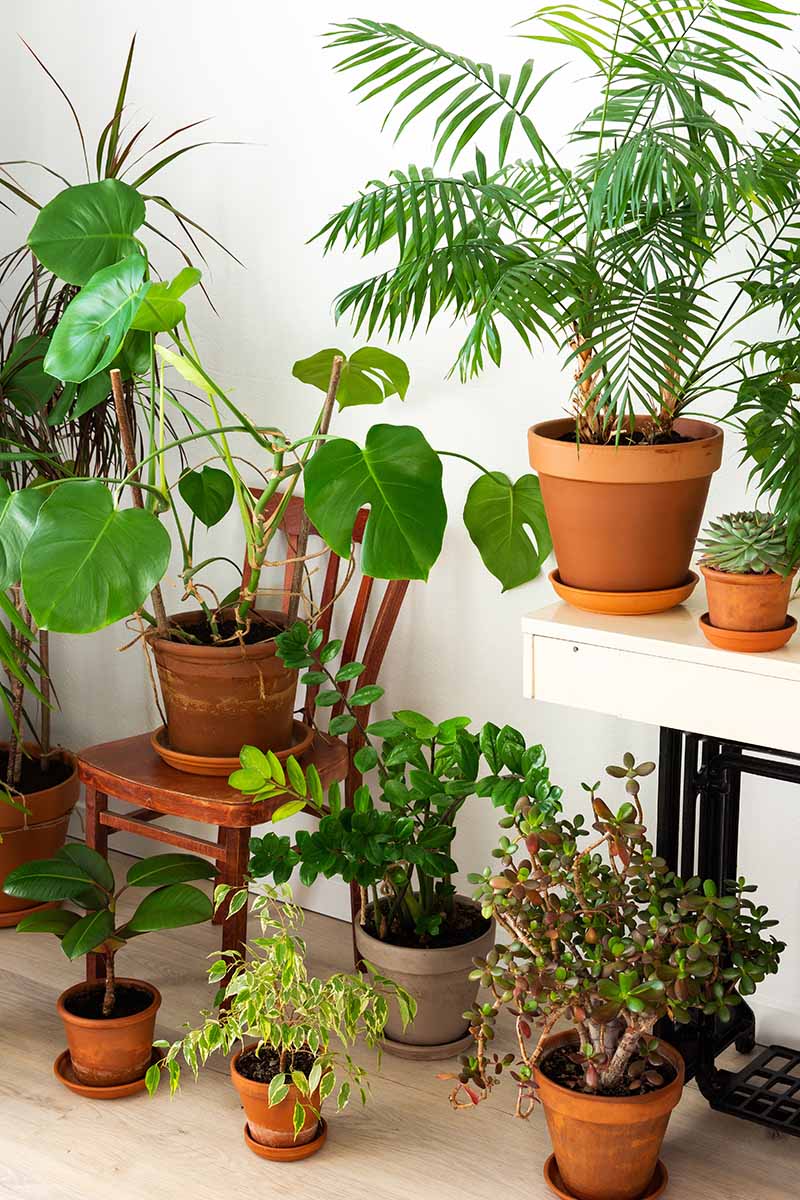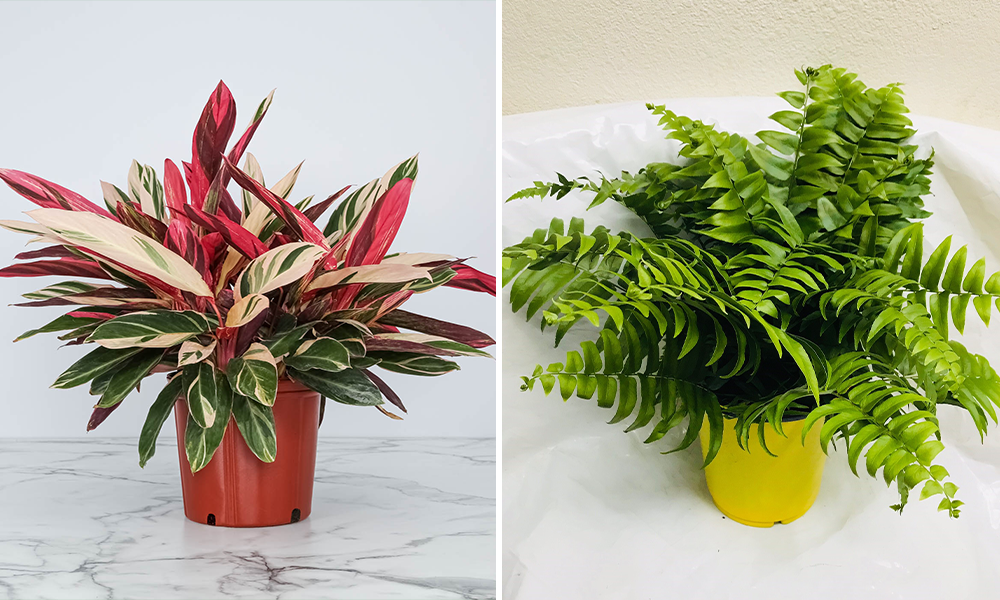Explore the Distinct Benefits of Low-Light Indoor Plants for Your Living Area
Including low-light interior plants right into your living area provides a multitude of advantages that expand much beyond mere visual appeals. These hardy plants not just prosper in atmospheres with restricted sunlight yet additionally offer crucial features such as air filtration and humidity enhancement.
Air Filtration Advantages
Low-light indoor plants not just improve the visual allure of living spaces yet additionally play a significant role in air filtration. Research has actually shown that specific plant types can effectively get rid of common interior toxins, including benzene, formaldehyde, and trichloroethylene. These substances frequently originate from house products such as furnishings, cleansing products, and building materials, adding to interior air quality problems.
Plants such as the serpent plant, pothos, and tranquility lily are particularly skilled at filtering system hazardous compounds from the air while thriving in low-light conditions. The procedure of phytoremediation, in which plants absorb and metabolize toxic substances, makes it possible for these varieties to contribute substantially to a much healthier interior setting. Additionally, through photosynthesis, plants release oxygen, additionally boosting air top quality.
Including low-light indoor plants into home or office areas not just provides aesthetic advantages but likewise serves as a functional approach for boosting air quality. By selecting the best species, individuals can create an atmosphere that promotes well-being and reduces exposure to hazardous pollutants, making these plants a necessary aspect in contemporary indoor living.

Mood Enhancement Results
Numerous studies have revealed that integrating indoor plants can considerably enhance state of mind and total emotional wellness. The existence of greenery in interior atmospheres has been linked to reduced stress degrees, boosted feelings of calmness, and boosted psychological health and wellness. Low-light indoor plants, in particular, grow in settings where all-natural light is limited, making them perfect for numerous living rooms.
Research study indicates that communicating with plants can stimulate the release of serotonin, a natural chemical related to feelings of joy and wellness. In addition, the act of taking care of plants fosters a feeling of obligation and success, additional adding to favorable psychological health outcomes. Low-light plants such as serpent plants, pothos, and peace lilies have actually been shown to boost air quality, which is fundamentally connected to mood enhancement.
Including these plants right into your home or office can produce a calm atmosphere, using a sensory and aesthetic escape from the hustle and bustle of life - Best low-light indoor plants. As people invest increasing amounts of time inside your home, the mood-enhancing impacts of low-light interior plants come to be also more vital, offering not only aesthetic charm however additionally an extensive effect on psychological health
Reduced Maintenance Requirements
For those seeking to enhance their indoor spaces without a considerable time commitment, low-light interior plants are an ideal choice due to their low maintenance requirements. These resilient plants flourish in less-than-ideal lighting conditions, making them ideal for homes why not try here and workplaces where natural sunlight is limited.

Pest resistance is an additional advantage of low-light indoor plants. Numerous varieties are less vulnerable to common parasites, lowering the need for consistent surveillance and treatment. In addition, these plants usually grow more gradually than their high-light counterparts, implying much less regular repotting and pruning are necessary.
Aesthetic Charm and Convenience

Additionally, these plants can be arranged in myriad means, whether in groups for a lush result or as standalone attributes to attract the eye. The options of planter styles-- from streamlined ceramic pots to rustic wood containers-- even more enhance their visual value, allowing property owners to share their individual style.
In addition, low-light plants can be purposefully put in locations that may otherwise really feel overlooked, such as edges or poorly lit shelves, therefore maximizing their decorative possibility. Eventually, the mix of their striking look and flexibility makes low-light interior plants a useful addition to any type of living space, developing an inviting atmosphere that advertises well-being and leisure.
Improved Moisture Levels
Enhancing interior humidity degrees is one of the substantial benefits of including low-light indoor plants right click site into living rooms. These plants naturally launch moisture vapor with a process referred to as transpiration, which takes place when water taken in by the origins moves with the plant and vaporizes from the leaves. This procedure not just boosts moisture but likewise adds to a healthier indoor atmosphere.
Better humidity degrees can reduce different health problems, such as completely dry skin, breathing issues, and allergic reactions. Numerous individuals experience pain in dry interior conditions, especially during cold weather when home heating systems are in use. By tactically positioning low-light plants throughout your home, you can create a much more well balanced moisture degree that fosters overall wellness.
Additionally, specific low-light indoor plants, like peace lilies and crawler plants, are especially effective at enhancing humidity (Best low-light indoor plants). Hence, low-light interior plants offer both aesthetic and functional objectives, advertising a much healthier environment.
Verdict
In recap, low-light interior plants provide various advantages that add to a healthier and much more welcoming living room. Incorporating these durable plants right into interior setups not just raises the ambiance however additionally advertises overall well-being, establishing a relaxing refuge for residents.
Plants such as the snake plant, pothos, and peace lily are especially skilled at filtering system harmful substances from the air while flourishing in low-light conditions. Low-light plants such as snake plants, pothos, and peace lilies have been shown to enhance air high quality, which is fundamentally linked to mood enhancement.
Low-light indoor plants, such as snake plants, pothos, and ZZ plants, not only enhance the aesthetic landscape of an area yet additionally present different structures and shades of eco-friendly our website that can complement diverse indoor designs. These plants normally release moisture vapor through a procedure recognized as transpiration, which takes place when water taken in by the roots moves via the plant and vaporizes from the fallen leaves.Additionally, specific low-light indoor plants, like tranquility lilies and crawler plants, are especially effective at increasing moisture.